|
I was connecting with Liz Stockton of X-Port Paws recently about No Kill philosophies and specifically about how some people say that if we just did ________________ (fill in the blank with one thing) the problem would be solved and all the healthy and treatable animals in our nation's tax-funded animal shelters would be saved. I wish it was that simple. Really. I do. If you are familiar with this blog or my website at all, you know I promote the No Kill Equation and have since I first learned about it almost 20 years ago after reading Nathan Winograd's groundbreaking book: Redemption: The Myth of Pet Overpopulation and the No Kill Revolution in America. The short explanation is that the Equation is a DIY series of programs that work together to help reduce the number of animals entering shelters (while helping the public) and that help animals who do end up in shelters to be placed faster (know of as a shorter "length of stay"). All shelters can and should learn about the Equation and take immediate action to stop the outdated (and I would argue unethical) practice of ending the lives of healthy and treatable animals for space or convenience. There are other ways to function and to the extent any shelter purposefully remains mired in the past, I view that a betray of the public trust. After speaking with Liz, I wanted to address the "If We Just Did This One Thing" theories I hear about most often. Spay and Neuter. Not a week (often not a day) goes by when I do not learn of someone saying, "if people would just spay and neuter their pets, animals would not die in shelters." It is absolutely true that if more people spayed and neutered their pets in any given community, there would be fewer animals in the community which may mean fewer animals entering the tax-funded animal shelter. I know some veterinarians charge hundreds of dollars for the surgery and a lot of people just can't afford that while trying to pay rent and feed their families. We can tell them that it costs more to care for a litter than to just have animals sterilized but that's a hard sell when your kids are hungry and there doesn't appear to be an immediate risk your dog will cause a pregnancy or become impregnated. Access to high volume/low cost spay neuter is one of the 11 elements of the No Kill Equation which helps keep pet populations low which, in turn, reduces intake. In the city where I work, there is a nonprofit spay/neuter clinic that is open to anyone no matter where they live or how much money they make. The city also funds a spay/neuter program for low-income residents so they can have pets sterilized for $5. This program, the availability of the nonprofit clinic and other factors have helped cut the shelter intake at the tax-funded animal shelter in half over a period of about five years. Communities that make an investment in programs like this are getting ahead of the issue by spending to prevent births as opposed to spending to impound, house and then destroy animals. I also support laws that require any animal adopted from a shelter or rescue group to be sterilized. I know there are some animal shelters and rescue groups that transfer ownership of animals old enough to be sterilized who are still intact. For shame. I know this happens a lot and it is irresponsible. The "promise method" some shelters use to try to get people to have animals sterilized after they are adopted seldom works. People may agree to have the animal spayed or neutered and may even sign a document in which they agree to do that. Once ownership is transferred, enforcement of the promise method is practically impossible. People often mean well and plan to have the surgery performed but then other priorities (either financially or based on busy schedules) prevents that from happening. Once ownership has changed hands, the shelter can't just demand the animal be returned and even if someone signed a document promising to have the surgery peformed, it becomes a civil issue to be handled legally, something I have never seen a shelter attempt. Ever. I do not support mandatory spay neuter for owned animals, often called MSN. This is punitive legislation that tries to force people to have all owned pets sterilized. Even in places that have MSN, there are exceptions for breeders, exceptions for people who do not want their pet sterilized on advice of their veterinarian and enforcement is almost impossible. I blogged about this fairly recently and will not cover this same topic in full again. I do encourage anyone who believes forcing people to have pets sterilized (as opposed to making it easy and affordable) to read my blog linked above. If you still support MSN after having read it, feel free to contact me so we can talk about your position. As Nathan Winograd says in his video No Kill 101 (which I share with elected officials often): "for decades, spay/neuter has been hailed as the singular solution to shelter killing, though it alone has never successfully created a No Kill Community. Why? Because spay/neuter focuses primarily on those animals who have yet to be born, leaving the animals already in shelters and who are under an immediate death threat with no protection from killing. In other words, while a significant investment in sterilization can reduce intakes over the long term, and that is important, it is no substitute for saving lives today." Rescues and Transports. There are those who profess that the single solution to end shelter killing is to get more rescue groups to help get animals out of shelters to transport more animals to different parts of the country. I've read a number of blogs recently that say just that. Rescuers are some of the most hard working people in the country and are to be applauded by us all. But for rescue groups, many more animals would die in tax funded shelters than do now. I clash with some people in animal rescue circles because their adoption fees price the animals they are trying to place out of the market (as they try to recoup veterinary costs through adoption fees alone), because they refuse to limit their efforts to a geographic area (in their efforts to help more animals than they can responsibly care for) and because so many of them have such loathing for people. Animal problems are people problems and it really is not possible to help animals without helping people in some way. In progressive communities, shelter liaison with rescue groups is incredibly important and is one of the 11 elements of the No Kill Equation. Rescue release should typically be just a fraction of all live outcomes with the other live outcomes being the result of returns to owner and adoptions. I know some in rescue refuse to adopt animals locally because they say the people in their area are too irresponsible, can't be trusted, etc. I once had a contact who drove dogs about an hour to a pet store location to hold adoption events. When I asked her how she was ever going to connect in a positive way with the people in her own community if she acted like they could not be trusted, she could not respond. When I hear or read that THE solution to keep more animals alive is for rescues to pull most of the animals (in most cases to transport them to other areas) I simply cannot agree. There are cases in which nonprofit organizations with a physical shelter contract with one or more municipalities for animal control and sheltering. Most rescue groups, however, are foster-based and function off of donations and grants with no tax-funded support. Rescue groups cannot carry the burden of life-saving for any community not only because they have a limited amount of space to house animals and limited funds to help animals, but also because doing so enables the failures in leadership that create unreasonable reliance on them exists. If a rescue group in any particular area is pulling the vast majority of animals, what incentive is there for elected officials to take responsibility for how their shelters function and how money is spent? None. I know a lot of people in the rescue community view saving animals as a life calling. My argument is that they should be considered part of the solution and not the only solution. The No Kill Equation is not rescue release, rescue release, rescue release, rescue release, rescue release, rescue release, rescue release, rescue release, rescue release, rescue release and rescue release. I know a lot of rescuers are frustrated now, particularly those who have historically relied on transports to other states to move animals. That became abundantly clear during the pandemic, when receiving states would no longer take animals from the source states. I know there are times when people find an animal on a site like Petfinder located hundreds or thousands of miles from them or otherwise learn about an animal on social media who is located far away and decide to adopt. I do not oppose transport for the sake of getting a specific animal from Point A to Point B for those long-distance adoptions. I do oppose mass transports from source locations to receiving locations where the lives of animals are already at risk. One such example is the pipeline between northern Alabama and Chicago. People may like the idea of saving southern animals from what they consider a fate worse than death by shipping them north. But news flash. There are plenty of animals in Chicago already who need help and importing them from other states only makes it harder to place local animals in need. And when nothing is done in the source location to address the reasons why so many animals need help, it is another enabling behavior. I know thousands of animals are transported from Texas to Colorado every year. Every life saved is a wonderful, positive outcome. But if we aren't doing anything to stop the flow of animals from Texas we are doing a disservice to the people who live in Texas and the animals being shipped north. A contact of mine who is the president of a local nonprofit phrased it this way years ago and I have always remembered what she said: the number of animals needing help is like the flow of water through a faucet. If we ever hope to stop the volume of need, we have to turn off the faucet. Yes, Jane. Stop dog breeding. The third solution I see most often, particularly on social media, is the way to keep more shelter animals alive is to "stop people from breeding animals." I do not discount that the volume of animals bred in our country, particularly commercially, contributes to the volume of animals in shelters. Millions of puppies are born and sold each year; it is a multi-million dollar industry. I am not aware of any study that shows a direct connection between dogs bred in Missouri with dog intake in Florida or Tennessee or California. It is logical to assume, however, that because millions of dogs are bred in the U.S. and are sold on websites and by brokers using creative marketing that appeals to consumers, people looking for a dog to add to their family often buy dogs through those methods like they would by a laptop or a sofa. I've written many times about issues related to the commercial dog breeding industry which I oppose and which is often supported by the rescue community. I have also written about the fact that dog breeding is legal and as much as people chant, "don't breed or buy while shelter dogs die," that is just not realistic. I always encourage people to adopt as a first option; I do all I can to persuade them they can find a great fit for their family and that shelter animals are not damaged. As much as I would never buy a dog from a hobby breeder (someone who breeds dogs on a small scale for the love of the breed) or small-volume breeder, many people do and that is their right. A co-worker of mine recently bought a Jack Russell from a breeder in Georgia. Do I wish he had adopted instead? Of course. But it was his choice and not something I was able to influence in any way. For people who genuinely feel that breeding is an issue in their community and is leading to more shelter intake, I encourage those people to create and advance local legislation that requires breeders to pay fees for their business, that creates standards for those operations, and that provides criminal penalties for failing to adequately care for the breeding dogs and the dogs they sell. I also encourage them to get involved on the state level to advance similar legislation for the sake of not only the dogs being bred, but the people who adopt them to make sure the dogs are healthy (something severely lacking in many dogs bred in commercial operations). Local ordinances that prevent pet shops from importing dogs for sale in a retail setting are also important to keep businesses like Petland from setting up shop; once a store is open and is selling their puppies, it is almost impossible to stop. Fires and How to Extinguish Them. In thinking back about my conversations with Liz, there is one other issue I want to touch on related to solutions to shelter killing. I am aware of people who spend a lot of time traveling around the county to bring awareness to what happens in our nation's animal shelters, who blog on that topic and who post about it on social media. I firmly believe that awareness leads to education leads to action leads to change. As much as people in animal advocacy and rescue circles believe the public should know about what is happening at their local shelter, most people just don't because it is not on their personal radar. It's incredibly important that we let the tax-paying public know what is happening at the shelter in their community so they know what they are paying for while they are, in most cases, blamed for a process that leads to the death of healthy and treatable animals. Only when people know what is happening can they participate in the political process and let elected officials know what they want and expect, perhaps even voting them out of office.
What I take issue with is the functional equivalent of yelling fire in a crowded room. Don't raise awareness - on any platform - to the needless deaths taking place nationally without also providing information and tools people can use to understand how we can change our society related to how shelters function. And without claiming it will just take __________________ (fill in the blank with one thing) to fix systemic issues. Don't yell "fire!" (animals are dying) without also pointing the way to the exits and explaining how the fire can be extinguished (saving animals using proven programs). The solutions have been known for almost 20 years and are available for the taking. The No Kill Equation can be implemented in any community and will always look different from location to location based on resources, challenges and the amount of public support. If, for some reason, you are not convinced the Equation works anywhere it is fully implemented, fine. Then develop or find some other solution that actually works and which does not rely on the "If We Just Did This One Thing" theory. I think you will find that to be incredibly difficult but am capable of learning new things. If someone can convince me another methodology works better than the Equation, I will consider myself schooled. If you live or work in a community where the tax-funded shelter ends the lives of healthy and treatable animals, speak out. Seek better. It may be necessary to become politically active as part of a group to try to "fight city hall." Don't wait for a large national animal welfare organization to come to your area to save the day because that's just not gonna happen. If you don't hesitate to complain about potholes in the road, timing of traffic lights, garbage pick-up and police response i your area, you can (and should) also be clear about how you want your money spent when it comes to balancing public safety with saving the lives of companion animals. Nothing changes if. . .nothing changes. As Margaret Meade once said, "Never doubt that a small group of thoughtful, committed citizens can change the world: indeed, it’s the only thing that ever has."
0 Comments
I received a call from an animal control contact of mine that was quite disturbing. It still upsets me just thinking about it now. My contact (we'll call her River for purposes of this blog) was trying to help a citizen who had trapped a free roaming cat, also called a community cat. The cat was believed to have an upper respiratory infection. The city does not have an animal shelter. Thinking she was doing the right thing, River took the cat to the local animal hospital with which the city has a contract. She thought the cat would receive veterinary care, would be kept at the animal hospital for the requisite hold period and she would later be able to make the cat available for adoption or get it to a rescue group. What happened next could not be further from what she expected. A vet technician said the cat had to be euthanized and used a heart stick to end the life of the cat while River stood watching in horror. The veterinarian was not on site; the tech behaved like this was common practice. For shame. It is possible the cat may ultimately have been euthanized. Upper respiratory infections in cats are caused by a virus or bacteria and it targets the upper airway instead of the lungs. Having said that, ending the life of the cat by heart sticking without the cat being unconscious is illegal in this state. The vet tech who ended the cat's life this way should be discipline and should lose her job. River reached out to me because she wanted to know about the legality of what happened and because she didn't want it to happen again. Euthanasia can be part of her job for animals who are genuinely suffering or irremediably ill but not like this. We talked about how she could pivot and find different solutions in the future to help cats with the help of local non-profit organizations and the veterinarians with whom those organizations work. We talked about how cats are part of the ecosystem and how it can be impossible to determine just from looking at a cat if he or she is social to people or feral (although there are some behaviors which make it easier to spot a feral cat). It is easy to tell the difference between a domesticated dog and a wild canine. The same cannot be said for cats. At all. River and I talked about Trap - Neuter - Return as the only humane way to manage community cat populations. I have written about TNR before so I won't go into much detail here. The simple explanation is that TNR is a process in which free roaming cats are trapped, sterilized, left-ear tipped for identification (while they are sedated for surgery) and then placed back into the ecosystem in which they were found to stop the breeding cycle and address problem behaviors (mating, marking and yowling). If you want to learn more about TNR, the sources I rely on most are Alley Cat Allies, Million Cat Challenge, Neighborhood Cats (this is specific to New York but has a lot of wonderful information), this 2013 article written by Dr. Kate Hurley and Dr. Julie Levy and this 2019 presentation by Dr. Hurley called Rethinking the Shelter's Role in Community Cat Management. We have been doing TNR at the office where I work for fifteen years with the help of a wonderful organization called Forgotten Felines. It has made a tremendous difference not just for free roaming un-owned cats but for pet cats. We have a feeder station where cats are provided with food and water 365 days a year and near which we do our trapping. Because our close to a housing community, many of our cats come from that community and are social to people. Once those cats are trapped, they are scanned for a microchip, sterilized, vaccinated and made available for adoption. Some of those cats (like Sky, the blue-eyed car you see here) were seriously injured and were able to get the veterinary care they needed because they were attracted to the food source. Those cats who are not social to people are put back into the ecosystem where they are monitored for body weight and general health. When we see an ear-tipped cat, we know it is part of our small colony. There have been a few cats over the years who were so ill they had to be euthanized. We had a old tomcat we tried to help recently who had an infection that was just too advanced to be saved. As sad as it was that he was euthanized, he knew comfort in the last weeks of his life and he avoided what would have been a prolonged and very painful death. River and I also talked about a newer concept called Shelter - Neuter - Return, a subject about which I have engaged with the experts at UC Davis in California. This is similar to TNR but relates to cats entering shelters and how we best help them. Amanda Newkirk shared the following information with me a few years ago: The vast majority of communities have far more cats living outside than adopters looking to bring them inside. For years we trapped cats, brought them into the shelter, tried to adopt as many as we could and, sadly, euthanized the ones that weren’t so lucky. That is until we found out there are an estimated 60-80 million cats living outside and this strategy for managing cats was not one that was ever going to be successful. In fact, removing a small percentage of cats from an environment has actually been shown to increase the number of animals born during the next birthing cycle. I am contacted often by people who oppose TNR or who just don't understand how it works. Most of the opposition is from people who believe the cats they see outside are suffering or who treat cats as an invasive species that pray on birds and other wildlife and would rather have the cats destroyed. People a lot smarter than me have done extensive studies on this topic and I remain unconvinced that the opposing arguments have merit. Removing cats from areas where they are found creates something called the vacuum effect in which other cats take their place. Large-scale efforts to eradicate cats like have been attempted in other countries have never worked and have often endangered other species. I invite anyone who opposes TNR to educate themselves on the facts and not based on sensationalized media hype or emotional arguments. A good place to start is here. On to how it works. It should be obvious: when cats are sterilized, they no longer produce offspring. But the benefits of TNR go way beyond that because of how the presence of those cats in the environment affect other cats around them. My communication with River led to to revisit Dr. Hurley's presentation from 2019 to refresh on what I had learned years ago. It was time well spent. I encourage everyone who is interested in the well-being of all cats to watch the full presentation. This excerpt gets to the heart of why TNR works and last about 4 1/2 minutes. I was very pleased to see a recent Facebook post from another wonderful organization in our area that focuses on TNR and helping people get their pet cats sterilized. They helped River recently with a feral male cat so she could find her pivot. She did not take the cat to the animal hospital where his life likely would have been ended, perhaps in an unspeakable way. River trapped the cat and took him to a veterinarian who agreed to help. This veterinarian sterilized, vaccinated and ear-tipped the cat with the expenses paid by the local nonprofit. The cat was released back into his habitat to live out the rest of his days. He had healthy body weight and it is possible he will live for many more years and will no longer be the "rolling stone papa" he once was. My personal hope is that this new relationship between River and the nonprofit organization means community cats will get the help the need in a way that is humane and which also helps the community.
Thank you for your compassion, River. Thank you for taking a terrible situation and using it to find a humane solution for the future. Joe and Duncan first met about 16 months ago. Duncan had been found running at large by Joe's neighbor. He was skin and bones and had multiple open wounds on his body. He was impounded in the city shelter where Joe began volunteering to help bathe and care for Duncan. Duncan is a sweet, big goofball of a dog, not unlike a small horse. Man and dog bonded immediately. After Duncan's owner came to reclaim him, Joe was told periodic welfare checks would be made every two weeks. This never happened. Fast forward. Joe learned Duncan was illegally tethered inside the backyard of a house occupied not by his owner but by a relative of the owner, in violation of city laws. I wonder now how very different the rest of this story could have been had the law been enforced and had periodic checks been made as Joe was told they would be. Joe checked on Duncan every couple of weeks and sought help from a local non-profit organization to get a doghouse for Duncan and set up a run line. After months of monitoring Duncan and as the weather turned colder, Joe approached the family where Duncan was kept and offered bedding and food. The offer was accepted. Joe gave Duncan fresh food and water, cleaned up his dog house and put out fresh bedding. Fast forward. During one of Joe's checks in late December, Duncan was no longer in the yard. He learned from the woman living in the house that Duncan had escaped and was impounded in the shelter again. Joe went to the shelter immediately and was assured Duncan would not be returned to the owner. Man and dog were reunited as Joe began advocating to find Duncan a good home. Joe was thrilled to learn that his work with Duncan had paid off and a family with two small children had met Duncan and decided to adopt him. They had spent an hour with Duncan and felt completely safe with him being around their 4 and 7 year-old daughters. Not so fast. Within hours of the adoption, the new family called the shelter for help. Duncan (who had likely never lived inside a house) was jumping and reacting to the ceiling fan. "What should we do?" the family asked. Rather than being given help, the family was told to return Duncan to the shelter which they did. I've never understood this response. Dogs have to adjust. Dogs have to decompress. Dogs have to get used to new experiences, particularly when they have lived outside their whole lives. My expectation is that the shelter would guide the family and not be so quick to suggest they return a dog who may behave the same way in another home in the future. We will never really know exactly what happened next and where the miscommunication happened, but shelter staff were led to believe Duncan had tried to bite a child. When he was returned to the shelter, he was met by staff members who were prepared to deal with an aggressive dog. A catch pole was used. Duncan did not react well. Slow down. As soon as Joe learned of Duncan's return, he dug into what had happened. Bite a child? Not the Duncan he knows. He was able to speak with the adoptive family who explained Duncan reacted to a fan, did not try to bite a child and there was a terrible breakdown in communication. When Joe explained to the mother of the children that a reported bite history could lead to Duncan's death, she went to the shelter to make sure Duncan's record was clear. She engaged with Duncan while he was there and he was reportedly happy to see her. Joe told shelter staff he wanted to adopt Duncan and was told no. Stop. Despite this positive interaction with the former adopter and based on the false report about Duncan's bite attempt and his reaction to the catch pole, Duncan was housed in a back kennel in the shelter not accessible to the public. Staff were afraid of the "aggressive" and "dangerous dog" who had allegedly tried to bite a child. Because of their fear, Duncan spent weeks in a kennel without being allowed outside and with very limited interaction with anyone. He was medicated. A representative from a local rescue group tried to pull Duncan from the shelter so Joe could foster him. The rescuer, who had pulled "behavior" dogs from the shelter before, offered to sign a liability waiver as had been done in the past and was told no. Duncan had been deemed aggressive and was to be "euthanized." Wrong. And wrong What followed to save the life of a single dog was nothing short of inspiring and amazing. Joe would not take no for an answer. He began interacting with local behavior experts Lisa and Jason Maasen from The Grounded Pooch, with veterinarians, with a former city council member and with other advocates in the community to fight for Duncan's life. To help convince city officials that Lisa and Jason had experience working with dogs like Duncan before and had been able to help them, two dozen happy clients wrote letters of recommendation with next to no notice in support of the Maasens. Joe sent email messages, he made phone calls, he sought and attended meetings. He explained that Duncan had been unfairly labeled as aggressive and fought to be able to adopt Duncan himself. With the help of what I began to call Team Duncan and after weeks of effort, Joe was able to convince city officials to allow him to be reunited with Duncan at the shelter under the supervision of the shelter director, the city attorney, and the city administrator to determine if Joe and Duncan could still interact safety toward them leaving the building together. Joe was told the city had never done this before and officials were taking a risk because of Joe's Herculean efforts to save one dog. He was required to undergo a home visit to make sure he was prepared to have Duncan in his home. Plans were then put in place for Joe to visit Duncan in his kennel with people standing by in the event Duncan reacted aggressively so they could intervene. Perhaps only Joe and Duncan knew what would happen next. And it was beautiful. When Joe approached the kennel, Duncan wagged his tail. He was happy to see his friend. Joe was allowed to take Duncan out to a play paddock to be truly reunited. I dare you to watch this and not be affected in some way. Joe took Duncan home that day as part of a foster-to-adopt plan which required him to check in weekly and have periodic home visits. He worked the plan that had been developed to integrate Duncan into his home with his other dog and his cat with ongoing help from Lisa and Jason and made amazing progress. The bond between man and dog prevailed. Joe told me on April 5th, more than 2 months after he took Duncan home, that he was allowed to adopt Duncan. Finally. Man and dog together for the rest of Duncan's life, an outcome about which I am grateful. The lives of dogs are ended in shelters every day under the guise of behavior, using labels like "aggressive" and "public safety risk." I do not dispute that some of those labels are warranted and there are genuine reasons to end the life of a dog who may injure or kill someone. I've seen the results of a dog bite fatality attack, and it was gruesome. We know from decades of animal sheltering, however, that how dogs behave in shelters says more about the shelter than the dog. We also know there are ways to set dogs up for success to maximize their ability to be adopted through proper interaction with them, informed kennel assignments and enrichment programs using regular walks, using dog play groups and by providing mental stimulation. We also know that all adopters need adoption counseling, need to be taught about dog decompression and need to be provided with support following the adoption and not just told to bring a dog back who is having trouble adjusting. This can often include common sense guidance and it can include referral to training resources for more long-term solutions.
At one point when Joe was interacting with a senior member of the shelter staff and asked if Duncan had ever bitten anyone of which she knew, the answer was "no. But he might." And therein lies the problem. All dogs have teeth. All dogs bite. They bite themselves; they bite each other, and they use their mouths to communicate. To presume that all dogs are dangerous just because they "might" bite someone is a sure way to end the lives of countless dogs for no good reason at all. And it is wrong. Hundreds of dogs die in shelters like this one every year for issues related to behavior - real or imagined. This particular shelter is currently ending he lives of 1 of every 3 dogs entering the building for "behavior." Let that sink in. More than 30% do not make it out of the building alive. Most are just identification numbers on a report, at least to city officials. They all had lives before entering the shelter, they all had names and they all deserved a chance to be treated as individual lives with value. We will never know how many Duncans are now gone not because they were dangerous but because of failures of a shelter system when solutions are known. This is a tragedy that is entirely preventable but it has to be seen as that - a needless tragedy - for anything to change in the midst of a shelter culture in which this much death is not only accepted but defended. My personal hope is that what happened with Duncan softened some hearts with senior officials with the city and will lead to changes at the shelter. Time will tell. I hold on to happy beginnings like this knowing change comes slowly. And that those who hear the least are those who will not listen. Animal shelter reform advocacy is tough work. It can consume every day of the week with no days off. It can lead to the loss of long-time contacts and even some people we once considered friends. It can be mentally exhausting as common-sense principles are shared with people who are so personally invested in the status quo that they would rather continue ending the lives of healthy and treatable animals than listen. Just listen. It can be emotionally draining as those intent on defending the killing focus not on the message but on the messenger, as if they are somehow responsible for the fact that the words "please stop killing healthy and treatable animals" have to be said in the first place. I first began advocating for animal shelter reform in 2006 after the loss of our dog Snake. We had her euthanized to keep her from suffering. We know exactly what the word "euthanasia" means so when I learned almost 20 years ago that healthy and treatable animals were being killed in places called "shelters" and they were calling it euthanasia, I knew that was all kinds of wrong. Almost 20 years into this venture, I continue to learn more with the passage of time and I have had my mind changed on some subjects along the way as I have educated myself or been educated by others. I am fully capable of saying, "I was wrong. Thank you for helping me see a new point of view." I have heard before that advocacy to try to reform animal shelters is a marathon and not a sprint. To the extent we talk about national trends, I fully agree with that statement. Times change, people change, values change. In the 1970s, shelters were ending the lives of some 16 to 17 million animals each year. Let that one sink in. 16 to 17 million. By the end of the 1990s that number was down to about 7 to 8 million. It is now less than 1 million animals each year which is still way too many. As is the case with many social movements in our country, change never happens as fast as we would like as it can take decades to see progress. We do best to keep ourselves updated not only on the latest methods being used at progressive animal shelters like the Lake County Florida Animal Shelter and the Humane Society of Fremont County in Colorado (which holds a dozen municipal contracts), but also on how some former leaders in our movement have lost their way and tried to take the public with them. It is hard enough to try to persuade antiquated shelter systems to change. That process is made twice as hard when people lose sight of what works well and instead focus on their own form of celebrity as advocates. Dangerous things can happen for our communities and the animals we love when conversations best shared over too many glasses of wine are instead put forth as viable operational methods. When it comes to local advocacy, I've had a change of heart as it relates to the "sprint not a marathon" description. It is neither, at least in my world. I had my first meeting with the mayor of the city in which I work in January of 2009 after having written to him following the municipal election in 2008. I said, "we can do better" and he wanted to talk about that. When I was not able to affect change on my own after we met, I formed an advocacy coalition in January of 2012. We are in our 12th year of advocacy which has had mixed results. The most intense period of our advocacy began in 2013 after the city refused free help from subject matter experts and we took the issue to the public which was paying attention. We had the attention of the community, a large following on social media and our website and support from local television and print media. We held events, we sold t-shirts and car magnets, we rented electronic billboard space, and we got time on the local public radio station. We were on a roll. That intense period lasted through about 2018 when the city began making changes to the shelter operation and we finally saw improvement in the live release rate which had gone from 49% for dogs and 30% for cats in 2012 to 90% for dogs and 95% for cats in 2018. We knew the city could do even better so our advocacy continued as we promoted our first version of the Huntsville Animal Protection Act and kept pressure on city officials to hold them accountable. The city hit a high for the live release rates at the end of 2021 when the dog live release rate was 94% and it was 96% for cats. We felt pretty good about what we had accomplished even though it had been a very difficult time for all of us balancing advocacy with our jobs and our personal lives. As we feared may happen, the progress achieved was not sustained. The city was able to make some progress by embracing some programs we promoted, but never did fully embrace them all. We now see declines in the live release rate which each passing month. We don't believe a time will ever come when the city reverts to the amount of population control killing it engaged in when I first met with the mayor (33% for dogs and 13% for cats). At least we hope not. We have struggled as a group to stop this gradual decline and have ultimately come to the conclusion that we cannot. We led the horse to water and he had a drink, but he ultimately walked away and nothing we could do could force him to cooperate. We are currently promoting a new version of the HAPA, almost half of which relates to how the shelter makes decisions about "euthanasia" and "behavior dogs" but are not confident it will get much further than a corner of a desk in the city attorney's office. Our communication with members of the city council is more often than not met with replies to the effect that the shelter is doing all that it can to save animals when we know that is just not true. It is easy for any shelter to blame poor performance on the pandemic or the economy or some other issue but those excuses don't work in this particular city that continued to thrive during a 3-year public health crisis, has an incredibly low unemployment rate, was named the top place in the nation to live a year ago and was rated the second best place to live in the nation recently. All advocacy has value, but I have come to believe when it comes to local animal shelter reform advocacy, it is not a sprint or even a marathon. The passage of time takes a toll not only on the advocates themselves, but on the ability of city officials to hear us. In our last meeting with the city administrator last summer, he tolerated us at best and loathed us at worst, in spite of our attempts at diplomacy. Members of the city council who once applauded our efforts have less time - and no doubt less patience - for us as we repeat ourselves over and over, imploring the city to at least try the things we have been recommending in some cases for 10 years. Sometimes I feel like a child in the back seat of a car on a long ride asking, "are we there yet" Are we there yet? Are we there yet?" I stand by what we did because it worked. We were the impetus for change which could have and should have been sustained. I genuinely believe that but for our advocacy, little would have changed and the shelter would still be destroying about half of all animals entering the building.
Local animal shelter reform advocacy is a relay. We have carried the baton for more than a decade as others have tried to beat us with it. I now believe it is time for new voices to be heard whom we hope can build on what we tried to create. We will see the process through with the HAPA. If we can't get enough members of the city council on board after meeting with them for a year, we will have our answer. We know we cannot force the city to change through some form of magical thinking. Sometimes trying hard just is not enough. We wish those who follow in our footsteps the best. All communities are capable of becoming No Kill communities. But not all communities are ready. Enough people have to be angry enough to speak out about what they want from those who govern them and enough elected officials have to be able to listen. Just listen. I wrote a blog about a month ago about the relationship between animal hoarding and mental health issues that was prompted by realizations about a contact of mine who was found to having dying animals inside her home. I interacted with her family following the suicide of her husband and her death. After learning more about the situation inside the home, I chose to delete the blog and save the topic for another day. This was done primarily out of respect to her family. I told her son I would revisit the issue later and that time has come. I don't expect you to read my blog and agree with me completely. My hope is that you will suspend your judgment long enough to learn something that may serve you well in the future or even help you prevent animal suffering and abuse. Not a week goes by that we don't hear about an animal hoarding situation in some form. Local tragedies have ranged from hundreds of dogs found inside the home of an elderly couple, many of which were dead, to a woman who was found to have dozens of animals on her rural property, many of which were dead or dying. If you search for the phrase "animal hoarding" you will find a litany of news stories from across the country which describe horrific situations which shock the senses. Some cases result in criminal prosecution. Many do not. What the cases have in common is a person or people who have more animals than they can reasonably care for who end up neglecting or abusing those animals leading to suffering and often death. My initial reaction to these situations is the same as most people. The information is disturbing, heart breaking and infuriating all at the same time. How can we not be angry about a situation so out of hand that people and animals live in filth and animals are left to die? How could they be so heartless and care so little for their companion animals? Why didn't they reach out for help? I still have the same initial reaction as I would have had years ago as my focus is on the suffering and death of helpless animals. After almost two decades of animal welfare advocacy, however, my next thoughts look a little deeper to examine the "why" and the "how." I now know these situations for what they are: animal hoarding. When people think of animal hoarding they think of dozens of animals inside a house, perhaps even dead animals inside a freezer. The number of animals is really not important. The complete lack of care for them, despite the best of intentions, is the key. Mental health experts have studied this phenomenon extensively. What at first looks like a criminal act created by intent really is not and the underlying reasons are quite often the opposite. What is Animal Hoarding? This article in Psychology Today explains animal hoarding this way:
How to Spot an Animal Hoarder The following are red flags that someone in your life may be collecting or hoarding animals:
What You Can Do to Help If you genuinely believe someone you know is an animal hoarder, whether you are related to them or not, take action to try to prevent the situation from getting worse.
The Response When I first learned about the abuse and neglect of animals by my local contact, I openly said that I thought there were mental health issues involved. I later learned there were also issues regarding spousal abuse which contributed to the totality of the situation. This was a tragedy compounded by tragedy compounded by suffering and abuse. I ultimately lost long-term contacts when I shared my opinion about mental health problems being the cause of the situation and when I wrote that it made perfect sense in hindsight that my contact was extremely critical of the local animal shelter. The local shelter did not cause her to be a hoarder. It just made sense that she felt so strongly about the shelter ending the lives of healthy and treatable animals while she felt she was doing all she could to keep her own animals alive.
I am always shocked at how much people in the rescue community advocate for compassion toward animals while having none toward people. There are some who are active in animal rescue (but certainly not all) who carry an immense amount of loathing for people in general which is just below the surface of their functioning. Of course animals suffer and die at the hands of hoarders as the hoarders suffer themselves. As much as the torch and pitchfork crowd may want hoarders to pay severely for their crimes, that does not always happen. As is explained by the Animal Legal Defense Fund, "animal hoarding cases are difficult to prosecute [because] most states have no legal definition for animal hoarding, courts already assign relatively low priority to animal abuse and neglect cases in general, and many people are unfamiliar with the severity of abuse in hoarding situations." There is a lesson so many in the animal sheltering and rescue community still have not learned: animal problems are people problems. As terrible as hoarding situations are, they do provide an opportunity for change and to bring good from tragic. I encourage the stakeholders in the animal sheltering, welfare and rescue community in an area in which a hoarding situation is found to examine this issue from a place of compassion and to try to prevent it from happening again. There are some communities that have created a Hoarding Task Force to help address potential hoarding situations using the expertise of mental health professionals, law enforcement professionals and members of the animal sheltering and rescue community. This approach is akin to a shift in some law enforcement agencies from treating every law enforcement encounter with the pubic as a criminal matter and instead using mental health liaisons to resolve situations to avoid arrest, incarceration and prosecution. Gobsmacked. I admit that is not a word I use often but sometimes it just fits and it is the only word that seems suitable to explain my reaction to the recent Substack series by Nathan and Jennifer Winograd called "Yesterday, Today and Tomorrow: Animal Sheltering in the United States." A little background is in order. I've been an animal welfare advocate since 2006 when I learned that healthy and treatable animals were being destroyed at the tax-funded animal shelter in the city where I work. So began my education about concepts related to animal sheltering as I struggled to understand why it was that places called "shelters" would have so little regard for the lives of the companion animals we value and with whom we share our homes. My education continues to this day as I learn about new issues, problems, philosophies and opposition to life-saving (of which there is plenty). Reading the Nathan Winograd book, "Redemption: The Myth of Pet Overpopulation and the No Kill Revolution in America," was a game changer for me. It opened my eyes to issues about which I likely should have known but just didn't have a clue. I consider Redemption part history-book and party how-to book. For me, the No Kill Equation presented in Redemption is a DIY solution that can be embraced by any community to reform its animal shelter without the need for consultants or expert advice. It helps to reach out to other places to learn from what they have tried, but plenty of information is readily available on the website for the No Kill Advocacy Center to start affecting change immediately. As Nathan as written before, with each day we delay, the body count rises. But back to the history part. We've all heard that those who do not learn from history are doomed to repeat it. We've also heard the insanity is doing the same thing over and over again, but expecting different results. These concepts are absolutely true when it comes to the manner in which our nation's animal shelters function. There is a history of animal sheltering from which we must all learn so that we can avoid doing the same thing over and over again and expect new results. This was really brought home to me recently when I listened to the series on Substack called Yesterday, Today and Tomorrow: Animal Sheltering in the United States. I really was gobsmacked. I knew some of the history from having read Redemption, but the information in the series was much more comprehensive and gave me a clearer view of how we got to where we are now, as well as some of the pitfalls we face moving forward. I also confess that I developed a new appreciation for Jennifer Winograd. Nathan is very much the face, and voice, of the No Kill Advocacy Center. Jennifer appears in the documentary film based on the book, but I really did not realize until recently how much of a team effort this has been for the whole Winograd family for so very long. I'm sorry, Jennifer, and thank you for your decades of advocacy. (images courtesy of Nathan Winograd) When I recommend to people they read Redemption, I usually say two things: 1) I consider it compulsory reading for any animal advocate; and 2) it's a little like doing homework. My own copy of Redemption looks much like a high school or college textbook with tabs, highlighting and notes in the margin. I refer to it often. I now say the same things about the Substack series. It was as important to me as Redemption if not more so because it is aptly named. It takes us through a deep dive of history, to the present and the possible future. I believe it is compulsory listening for any animal advocate and yes, it's a little like doing homework. I listened to the series over a period of weeks, so I was able to take notes. I've asked Nathan to consider putting the series in book form. It's been many years since Redemption was published and while animal sheltering is an ever-evolving industry, I think a new book may be in order to help people understand more of that has transpired in the last 15 years. I get emails every week from people asking how to fix our sheltering system and what they can do to help. I strongly believe that an informed advocate is a more effective advocate. It is not enough to be upset by what you see, hear and learn. We all need to know how to fix it so you can be the voice for shelter animals. I know there are people in animal sheltering and rescue who are so stressed that the thought of reading a book like Redemption or listening to a series on Substack may seem like time they just do not have. My response is that if you want to be part of the solution so that in the future you function more efficiently and less frantically, this is time very well spent. I'm sharing a few of my many notes from each recording to pique your interest while imploring you to carve out time to listen yourself and perhaps make your own notes. This is important. (image capture of Henry Bergh from the documentary film Redemption: The No Kill Revolution in America) Part 1 Regarding Henry - The birth and betrayal of the humane movement in America
Part 2: A House of Cards Divided - The fight for the heart and soul of America's animal shelters
(images courtesy of Nathan Winograd) Part 4 - A glass half full and half empty: we've made tremendous progress but we still have a long way to go
Part 5 - What's Past is Prologue - to best serve animals, humane societies must recapture their roots
Winter is Coming (this podcast was not part of the 5-part series, but I found it directly related to what had already been discussed.
I had a conversation with some of my contacts in the national No Kill community recently about the toll taken at shelters where healthy and treatable animals are destroyed. We started talking about it after an article was written by some big thinkers in the animal shelter industry called “The Human Face of Shelter Euthanasia.” Some of the content of the article troubled me and for some reason the article is not available, at least not now. The article and our conversation got me thinking about the changes I have seen in the shelter industry in the last fifteen years - at least in some places - and how the culture in shelters affects not just the animals, but the people in the building and the community as a whole. The best way to explain this is with two examples. Shelter A is a kill shelter which means that healthy and treatable animals are killed for space, convenience or what some call “lack of resources.” This means that animals who are suffering are euthanized and dogs who are too dangerous to be out in the community are destroyed, but the lives of animals who are otherwise healthy and treatable are also ended. There are a number of excuses used for this, but the end result is the same because the act is permanent. The general mindset at this shelter is that it is the fault of the public that animals “have to" die. Employees and volunteers tell themselves there is no other way because the public just does not care enough. They say that if the public would only keep pets contained, spay and neuter pets, stop breeding animals, be more responsible, etc., the shelter would not be forced to end so many lives. Some of the people in this shelter take great pride in how they treat the animals prior to ending their lives, spending extra time with them or giving them special food or treats much like a death row inmate may receive a last meal. Most shelter employees lament the death, but tell themselves there are fates worth that death like adopting to a “less than” family (which means a family which does not meet all of the shelter criteria to adopt) or like having the animals develop negative behaviors while in the shelter due to stress. I see these attitudes as a form of cognitive dissonance. The toll taken by the killing in this shelter is paid 1) by the healthy and treatable animals who should have and could have been saved; 2) by the people who work in the shelter and who have either engaged with the animals are who are tasked with ending their lives; 3) and by the community as a whole. This shelter is seen by the public not as a place of hope, but as a place of death. People do not want to go there, do not want to take their children there, and for the most part do not want to volunteer there because it is emotionally easier to just distance themselves from what happens at the shelter than to deal with the death. They just can't handle it and feel powerless to do anything about it. Shelter B is a No Kill shelter which means healthy and treatable animals are not destroyed. Animals who are suffering or are irremediably ill are euthanized for reasons of mercy. Dogs who are genuinely dangerous to the public are also euthanized because they are considered untreatable (as opposed to dogs who have mild to moderate behavior issues who can be rehabilitated, fostered and adopted into homes). In this shelter, each animal is treated as an individual and is viewed as having been - or being capable of being - someone’s beloved pet. The shelter staff works incredibly hard every day to keep pets in existing homes to avoid them entering the shelter, to provide enrichment and care to those animals in the shelter and to get animals out into foster homes, adoptive homes or to rescue groups as soon as possible. For this shelter, the public is not the enemy. The public is presumed to care and to sometimes need help and guidance either to make better personal decisions or to learn how to help the shelter. The shelter communicates on an ongoing basis with the public to help them keep pets contained, find lost pets, make sure pets can be identified, overcome problem behaviors, locate resources in the community (food, veterinary care, spay/neuter assistance and behavioral help), learn how to foster pets, learn how to volunteer to help pets, learn how to adopt pets and about pets who are at risk and need to get out of the shelter immediately because they are doing poorly in the shelter environment. The people who work in this shelter have incredibly difficult jobs, but they take pride in what they do. Each day is a new opportunity to help animals in need while serving the community. There is sorrow when the lives of shelter animals are ended, but staff and volunteers are confident that each animal euthanized was given every opportunity to leave the shelter alive, they did their very best to find a positive outcome and the ending of the life was done for reasons of mercy. I work in a community where the shelter was once like Shelter A and is now like Shelter B. The transition from a shelter which had historically destroyed thousands of healthy and treatable animals each year to one where very few animals die each year has been nothing short of remarkable. This transition did not happen because the public suddenly became more responsible or cared more or made better choices. The transition was at times incredibly difficult and it made a lot of people uncomfortable. It’s hard to admit that there is a new way of functioning while not focusing on the past and what could have been. Change happened as a result of municipal leadership, advocacy and public pressure and it has led to a complete shift in culture at the animal shelter. Are there still issues? Sure. Is there fine tuning to be done? Absolutely. But a building which was once used to house and then destroy animals is now used to house animals and keep them alive. When I think of how the shelter functioned before, I know the operation was fatal for so very many animals, detrimental to the mental, emotional and likely the physical health of the staff, and was a source of shame in an otherwise very progressive community. But all that is in the past. Now the shelter is a place of hope instead of death. People in the community turn to the shelter for help, guidance and assistance. Working and volunteering there is still a challenge because the work is really hard, but it is also rewarding which means the people who manage and help the operation are happier. I have been told that the pressure to keep up the level of life-saving is intense and I’m sure it is. The public has come to expect that animals will be kept alive now that a higher standard has been achieved. There are still critics and there always will be, but the way in which the shelter operates is now a source of community pride. What kind of shelter do you want for your community? A or B? I know the price. I know the toll. I know my choice. (Images courtesy of Erick Pleitez and Lisa Vallez)
I participated in a No Kill in Motion panel discussion recently about the subject of appointment-only hours for animal shelters. During the early months of the pandemic, some shelters closed entirely. Others went to appointment-only interaction with the public. Using appointments made perfect sense for a while as we all adjusted to what we now refer to as “public safety measures” to keep people safe and try to limit the spread of the Covid virus. Some shelters split their staffing into teams to limit the number of staff in the building at any given time. This also made sense – if someone on Team A got sick, the shelter would only need to test and quarantine those team members, limiting the negative affects on the shelter operation. With the country back open for business, some shelters have continued their appointment-only hours. The members of the panel were not in complete agreement regarding why this is a bad idea, but we all agreed that only seeing people by appointment creates barriers to add to the barriers which already exist related to animal adoptions. As Nathan Winograd wrote about years ago when he said “good homes need not apply,” some organizations make it so difficult to adopt animals that really good people end up being turned away for reasons which have very little to do with their decision to bring an animal into their home and their commitment to care for that animal. Work more than 40 hours a week? No, you cannot adopt. Travel for work? No, you cannot adopt. Have children in your house? No, you cannot adopt. Over the age of 50? No, you cannot adopt. The list goes on and on including one which would have precluded my family from adopting years ago – lack of a fully fenced yard. Companions and Animals for Reform and Equity (CARE) did a great video about this very subject recently which I share often. Some people get so frustrated by the extraordinary lengths they must go to trying to adopt a shelter or rescue animal that they give up and end up getting a new pet from a breeder. The problem was recently covered in an article in the New York Times entitled, "Want to Adopt a Pet? Prepare for a Full Background Check." Shelters are at their very core customer service and marketing organizations. Yes, they exist for reasons of public safety but now are increasingly expected to balance public safety with animal welfare because that is what the public demands. Any shelter which only interacts with the public by appointment is seriously limiting its ability to help people reclaim animals or help people adopt new animals. There is nothing at all wrong with having appointments for people who seek pet surrender counseling to talk to them about alternatives to surrender or people who want to talk about some issues they are having to get help to overcome those issues. But requiring appointments for people to try to reclaim a pet or even adopt a pet serves to create more barriers to a process that many people already find daunting. The issue of shelter hours came up just this week in my own area related to the municipal animal shelter in the city where I work so I will take this subject one step further. Shelters that do not require appointments, but which are only open to the public when people are at work also create tremendous barriers. Not everyone works from 9:00 a.m. to 5:00 p.m. but many people do. If the shelter is only open during hours when people work, how are they supposed to get to the shelter to reclaim a lost pet or adopt a new one? It is almost impossible unless that person takes vacation time from work, provided they have a job which even provides them with vacation time at all. Let’s say someone’s cat is missing and they know from looking at the shelter website that their cat is there. The shelter is only open from 9:00 to 5:00 when they are at work. Even if that person gets a one-hour break for lunch, it takes time to drive to the shelter, go through the process to reclaim their pet, get their pet back home and then get back to work. I challenge even the person who lives closest to a shelter and works close by to accomplish all those tasks in an hour. Adopting an animal takes even longer. People should feel free to look around at the available animals without someone following them around like an aggressive used car salesman (no offense intended to used car salesmen; this is a statement about people who hover), should be able to spend time with animals they are interested in, ask questions, etc. It is not possible to do that during a lunch break, get the animal home and help that animal begin the shelter decompression process. The only way someone could either reclaim an animal or adopt an animal in the scenarios above would be to take vacation time, if that is even available to them. I have heard some people say that running the shelter by appointment only is less stressful for the animals and staff because there are not as many people wandering around. As Shirley Marsh of Yes Biscuit said during our discussion, getting those animals out of the shelter by having them adopted or fostered is also less stressful. Animal shelters that are open until at least 6:00 p.m. or even 7:00 p.m. make it much easier for people to come to the shelter after leaving work and then go home from the shelter with their reclaimed pet or new pet. Shelters with weekend hours make it even easier to reclaim or adopt a pet. As one shelter director in Florida told me, “we’re in the building on the weekend anyway, so it made perfect sense to make it easier for people to get here.” Exactly. If you run an animal shelter and are only open by appointment or only open when most people are at work, please take a good look at what you want to accomplish. Having different hours doesn’t mean being open more hours. It means being open hours which make animals accessible to the public you serve so that you can help get more animals out of your building and either back home where they belong or into new homes. If you really only want to work from 9:00 to 5:00, you are in the wrong business. (image of animal control officer with dogs courtesy of the Lake County Florida Animal Shelter)
It happens every day. Pets are displaced from caregivers for a variety of reasons and not all have to do with someone’s irresponsibility. A cat slips outside when a child leaves a door open. A dog escapes a fenced area when a contractor leaves a gate open. A cat is scared by loud noises or fireworks and runs from a yard in fear. A person is in a traffic accident and the dog traveling in the car with them runs off when a door is opened. Severe weather arrives quickly and pets go missing either before or after a storm. We try to do our best to make sure our companion animals are not separated from us, but sometimes our best is not enough. Most animals who get lost or go missing don’t make it back home for one reason: they cannot be identified. I see posts every day on social media about lost animals someone has found. Many people do the right thing and alert local animal control authorities to increase the chance of the caregiver being able to find their lost pet. Just as many people don’t take that step at all, instead choosing to either keep the found animal or give the animal away to someone else. I know people joke about what their pets would say if they could talk and while we know that won’t happen any time soon, it would certainly make it easier to get them back where they belong. “I got lost when I chased a squirrel and then another dog and then a cat. But I live at 123 Main Street. Can you give me a ride home?” There are many ways to help pets be identified if they are lost. A dog collar with a phone number. A collar with a tag what includes a name and phone number. As I have written about before, my go-to recommendation is to have a microchip in addition to these other methods because it cannot fall off, cannot be torn off and cannot be taken off by someone who finds your pet. Our dog wears a collar with his rabies tag, but it also has a tag with his name, on the back of which is his microchip number and the phone number of the manufacturer to call if he is found. A microchip is not a GPS tracker. It’s a small implant, about the size of a grain of rice, that functions using radio-frequency identification which does not require a power source. Think of it like a barcode for your pet. When a microchip scanner is passed over the pet, the microchip gets enough power from the scanner to send the microchip identification number to the scanner. That number is then used to trace the animal back to your registration for the chip. There is no battery, no moving parts, nothing to lose, nothing to charge and nothing to wear out. The microchip will last for the lifetime of your companion animal. Beyond the obvious simplicity of microchip, it has another advantage. If your pet is stolen, the chip is your “proof” that the animal belongs to you. All of this is dependent, of course, on registering the microchip with the manufacturer and keeping that registration information current whether you move or whether you have to re-home your pet yourself for some reason. Just this morning I saw a story on the news about the power of microchipping. A woman in Foley, Alabama, lost her dog more than two years ago. Brooke Lake opened the door of her house and her Beagle, Lilly, “caught a scent and she just ran.” Brooke did all the right things. She searched everywhere, called veterinary clinics, called animal shelters and still could not find Lilly. What Brooke did not know is that Lilly had found her way to a truck stop where someone picked her up and drove her to Oklahoma. Her new caregivers had trouble keeping Lilly inside their fenced yard and took her to an animal shelter. Lilly was scanned for a microchip and was traced back to Brooke. An Oklahoma rescue group will transport Lilly back to Foley this week to a very excited Brooke. This happy story would not be possible without Brooke having taken the time to have her dog microchipped. We hear stories like this often and as amazing as they are, they reinforce for us the fact that microchips work to get pets back home. So, where do you get a microchip and how much do they cost? It varies depending on where you live. If you got your companion animal from a shelter or rescue group, he or she may already be microchipped so check with that organization to get information from them first. Most veterinarians will microchip your pet although some charge a lot for that process. It’s often possible to get your pet chipped for a super low cost at a microchipping event in your area. You can also buy your own microchip and ask your veterinarian to implant it for you. I found a Home Again Microchip on Amazon for $13.75 and at Jeffers for $11.99. If your veterinarian will not insert a chip you purchase yourself to save money, it may be time to find a new veterinarian. Once the chip is implanted, make sure you register it and keep the registration information current. I also recommend having your veterinarian scan your pet’s microchip during regular exams to make sure the chip has not migrated to another part of your pet’s body. I also recommend you use a chip from a reputable company like Home Again, DataMars (Petlink), AKC Reunite, AVID or 24PetWatch. There are some really cheap chips which are part of a 900 shared manufacturer series (used globally) which are not as reliable.
I’ve had people tell me that they don’t think their pet needs to be microchipped because they live inside or are never without supervision outside. Considering how little a microchip costs, and the fact that our companion animals are priceless to us, I think all pets should be microchipped. We just never know what unexpected events may happen and once a pet is displaced from us, it is too late to lament the fact that we didn’t spend $20 to help them get back home. Microchipping is suitable for a variety of species we keep as animal companions. If your animals are not microchipped, please make plans to help them "call home." There are some universal truths in life, one of which is that no one gets to stay. Our time here is limited even though we act as though we literally have all the time in the world for ourselves and with those we love. Another truth is that we all want to matter. We all want to make a difference in some way through the legacy of our families, having contributed to some change or having helped others. We seek confidence that our time here was well spent, regardless of our individual beliefs about what comes next when we die. The 10-year anniversary of my dad’s passing is at the end of this month and I’ve been reflecting on his influence on almost every aspect of my life, one of which is my animal welfare advocacy. In the fall of 2009, both of my parents were diagnosed with different forms of cancer. Dad’s lung cancer diagnosis was early September; mom’s stomach cancer diagnosis was early December. As I struggled to process the realization that I would lose them both not decades in the future but at any time, I found myself thinking of my own mortality. Where I was in my life at the time. Choices I had made. What was important to me in the big scheme of things. It was sobering to say the least. I had been doing animal welfare video projects for a few years to help animal rescue groups, but was there more I could be doing to make a difference? The answer to that question was yes. In late 2009, I decided to publish a website to help other people like me who may consider themselves “animal people” but who may not be aware of some of the issues related to companion animals in our society. I wasn’t sure what I would accomplish, but thought it was worth the effort to try to reach some people. I chose the name Paws4Change. This is an intentional play on words. My goal was to present content which may cause people to pause and then perhaps learn something new or change some previously held belief. I knew from my own awakening about issues related to companion animals in our country that there were a number of subjects which were all related to some way to the destruction of healthy and treatable animals in our nation’s shelters using our money and in our name. Puppy mills. Free roaming cats. Chaining of dogs. Spay and Neuter. Breed bans and restrictions. And, of course, no kill animal sheltering philosophies. I shared my website with my parents in January of 2010 during one of many visits to see them over a short period of time. They were both undergoing a dueling chemo schedule and I honestly wasn’t sure how much they would care about my efforts. Their lives were in the balance and much more important issues challenged them every day. They did take time to look at it and they each gave me a long hug. I distinctly recall dad saying, “the website looks great. But why is your name not on it anywhere?” I confessed that I had not included my name at that time because some of the issues I covered were the subject of intense debate and I didn’t want anyone to threaten me or try to damage my reputation in some way for having had the audacity to speak. I also distinctly recall the next thing he said: “if it’s worth your time to set up a website to help people and take a stand, it’s worth putting your name on your work. Own it.” Yes, dad. You were right then, just like you were on so very many subjects over the years. My parents are both gone. Dad left us on October 28, 2010, after his lung cancer moved to his brain. Mom left us on March 20, 2011, having outlived predictions for her lifespan by more than a year. We lost Rich's dad to cancer five days after my mom; it was a tough six months to say the least. I wrote about the loss of my parents before in my blog about placement of their cats. Not a day goes by when I don’t think of them and don’t miss them. I carry them with me each day. My website has changed over the years. Some of the early content I thought would help people was of limited value so I got rid of it. I was looking back at it on The Wayback Machine for this blog and had forgotten how the site has changed over the years. I had to trademark the name a few years back after some folks decided to not play well with others and I've had to remind people about trademark protections a few times. I’m considering a new look in the next few months just to make the site appear a bit more modern. The site content will remain essentially the same because the goal is still the same: to try to help people like me learn something new so they can make better personal choices which may have positive effects not only in their own lives, but in their communities. I still do my video work for nonprofit rescue groups and some for animal shelters. I now do periodic fundraisers to help those same organizations and published a book about my no kill animal shelter advocacy last year. I’d like to think both my parents would be proud and would approve. I could not help them stay here. But I give thanks each day for the time we shared and how they helped me become the person I am today. I honor them through my advocacy as I hear dad’s voice in my mind, telling me to “own it.” I'm not sure how much of an effect my efforts have. I know I have regular traffic to my website and my blogs are shared by some. As much as I would like to change the world, I know I cannot. But I can change some small parts of it and that's good enough for me. We are all shaped by events in our lives, some of our own choosing and some over which we have no control. If there is something important to you, whether it is some wrong in society you want changed or some need to be fulfilled, I hope you will strive to get into what John Lewis called “good trouble.” We can all make a difference in a myriad of ways in our own families, with our jobs and with how we live our lives each and every day. As the tag line for my website says, your values are expressed by the choices you make. Go forth and do great things. You can make a difference. Time is both fleeting and precious. you know life's too short to live it in fear
only thing you will regret is what you do not do at all even more than the stupid things you do better take the chance listen to your heart, no one can tell you what your spirit wants tell yourself |
AuthorI am an animal welfare advocate. My goal is to help people understand some basic issues related to companion animals in America. Awareness leads to education leads to action leads to change. Archives
July 2024
Categories
All
image courtesy of Terrah Johnson
|








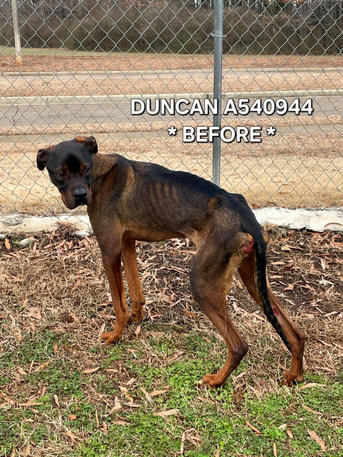

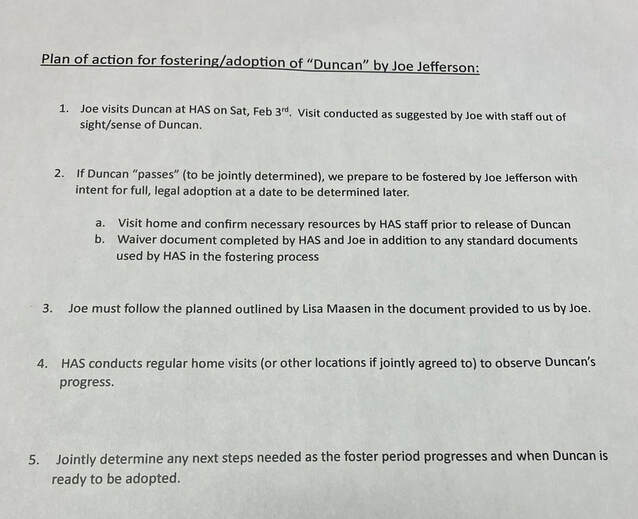
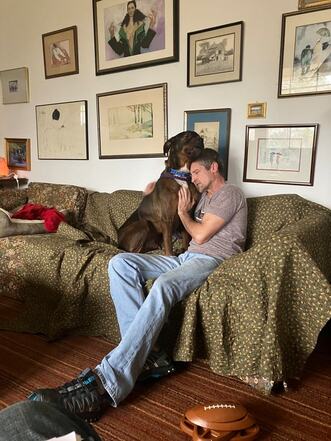
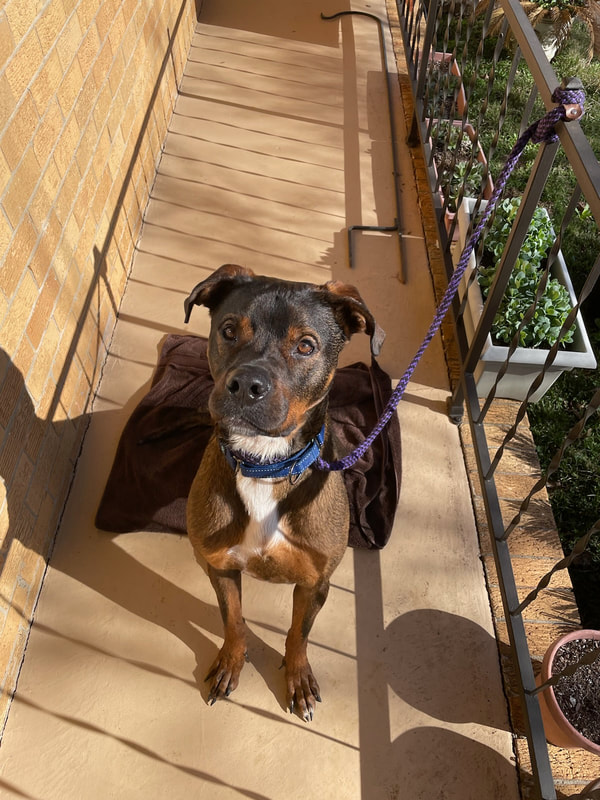
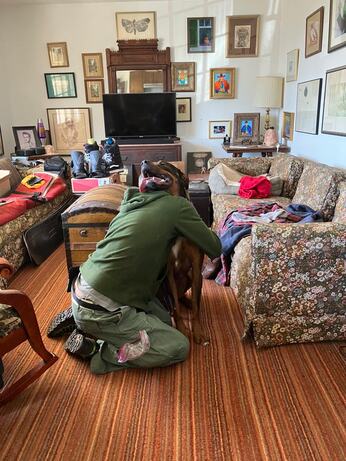

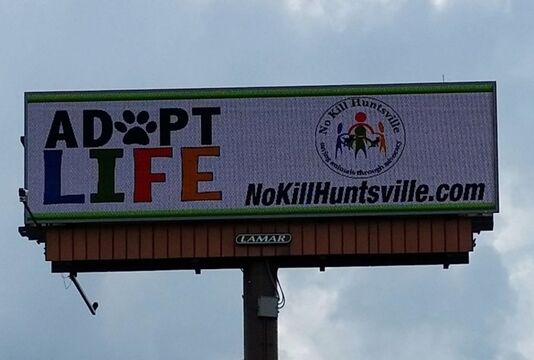



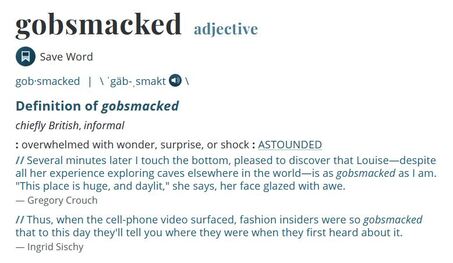




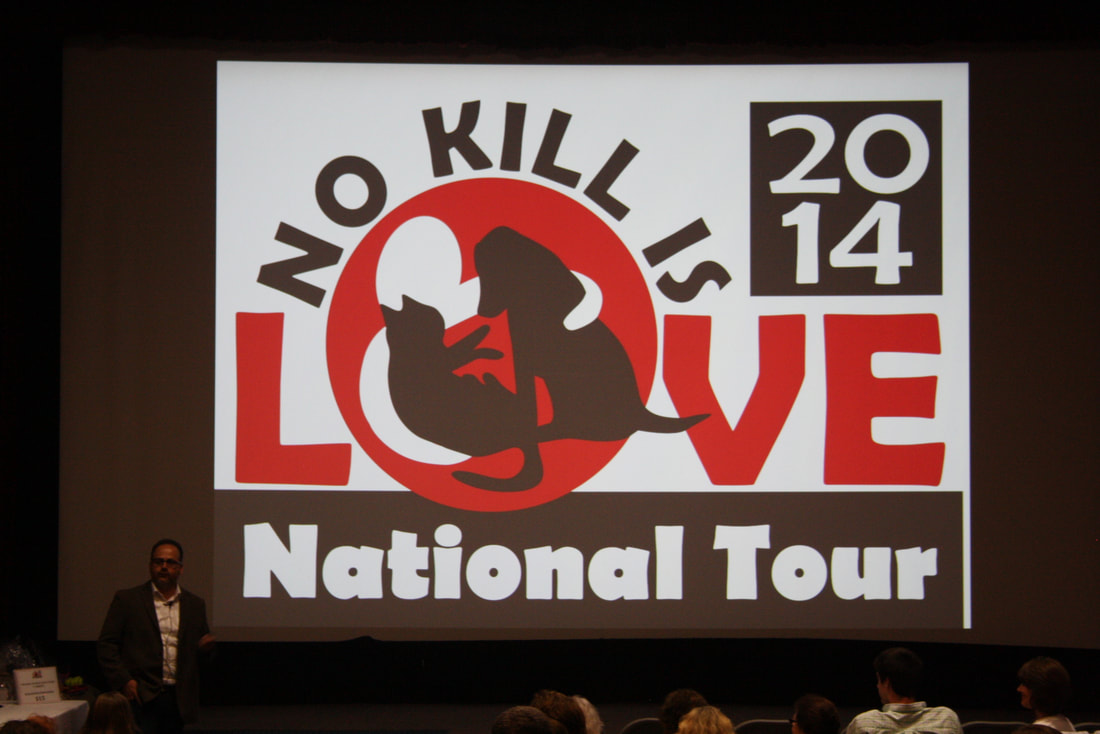
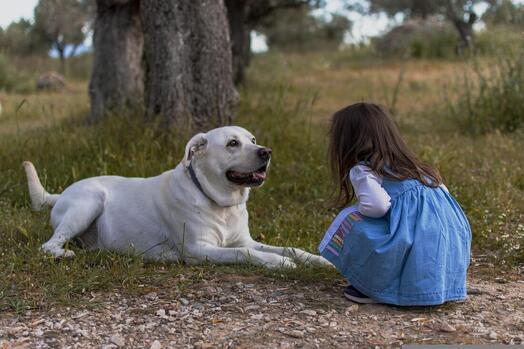
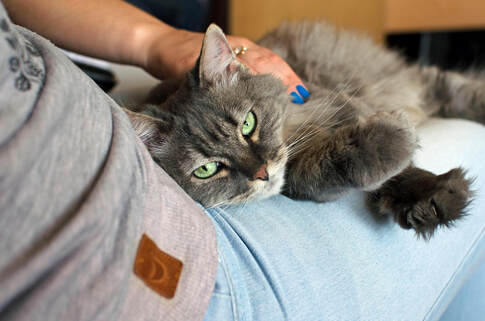
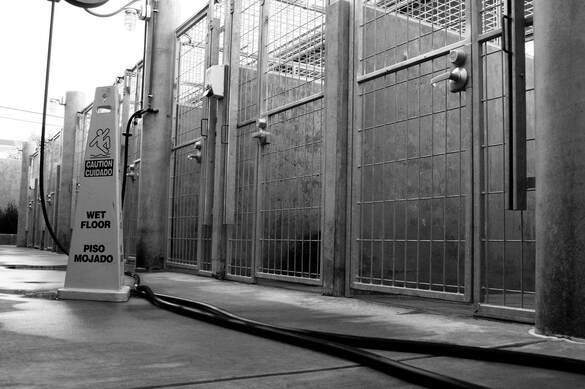
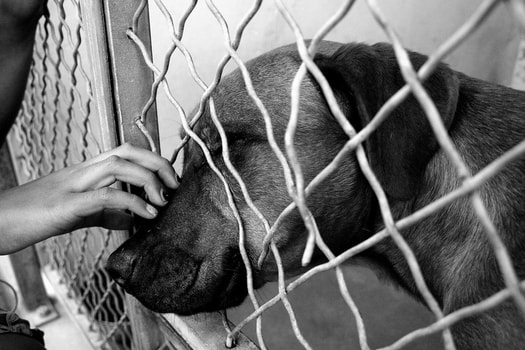
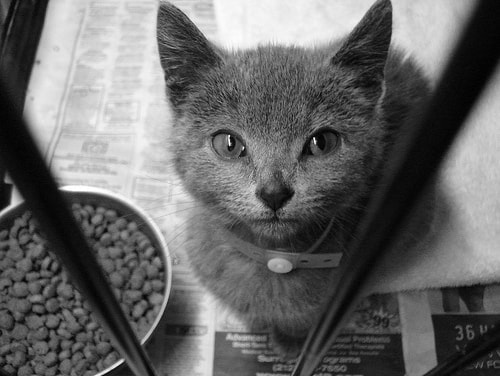
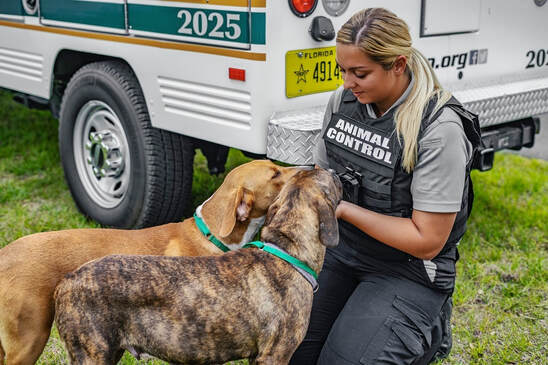
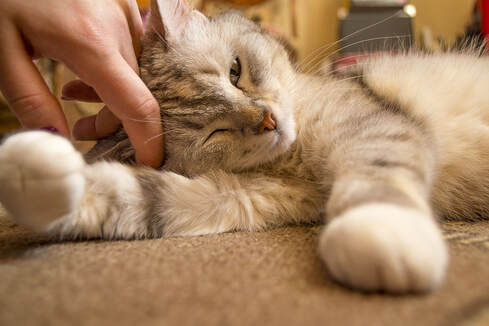





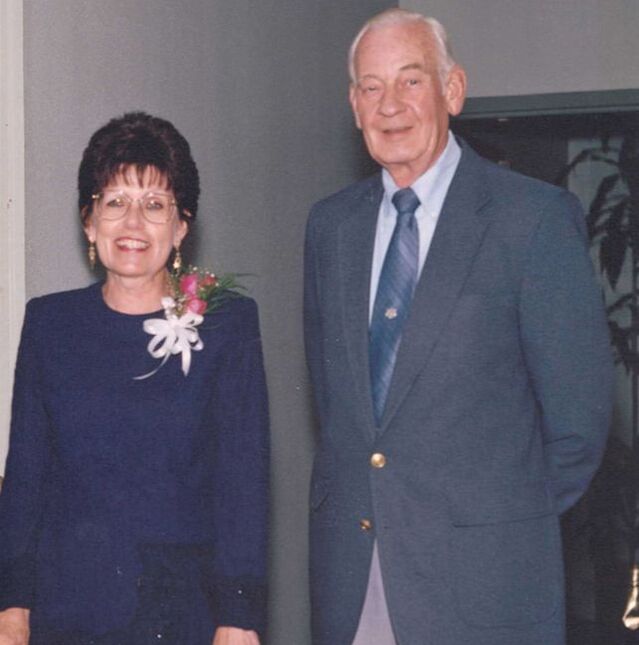
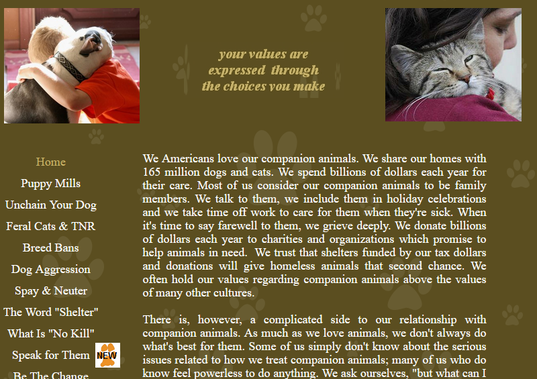
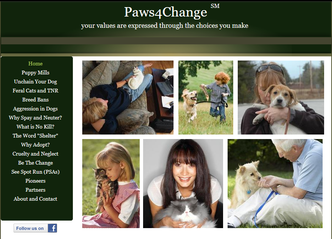
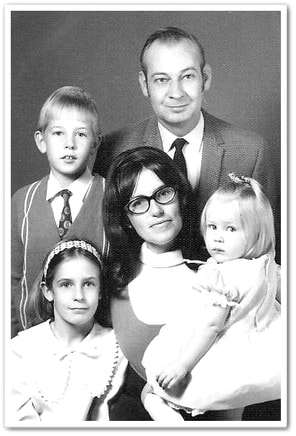
 RSS Feed
RSS Feed